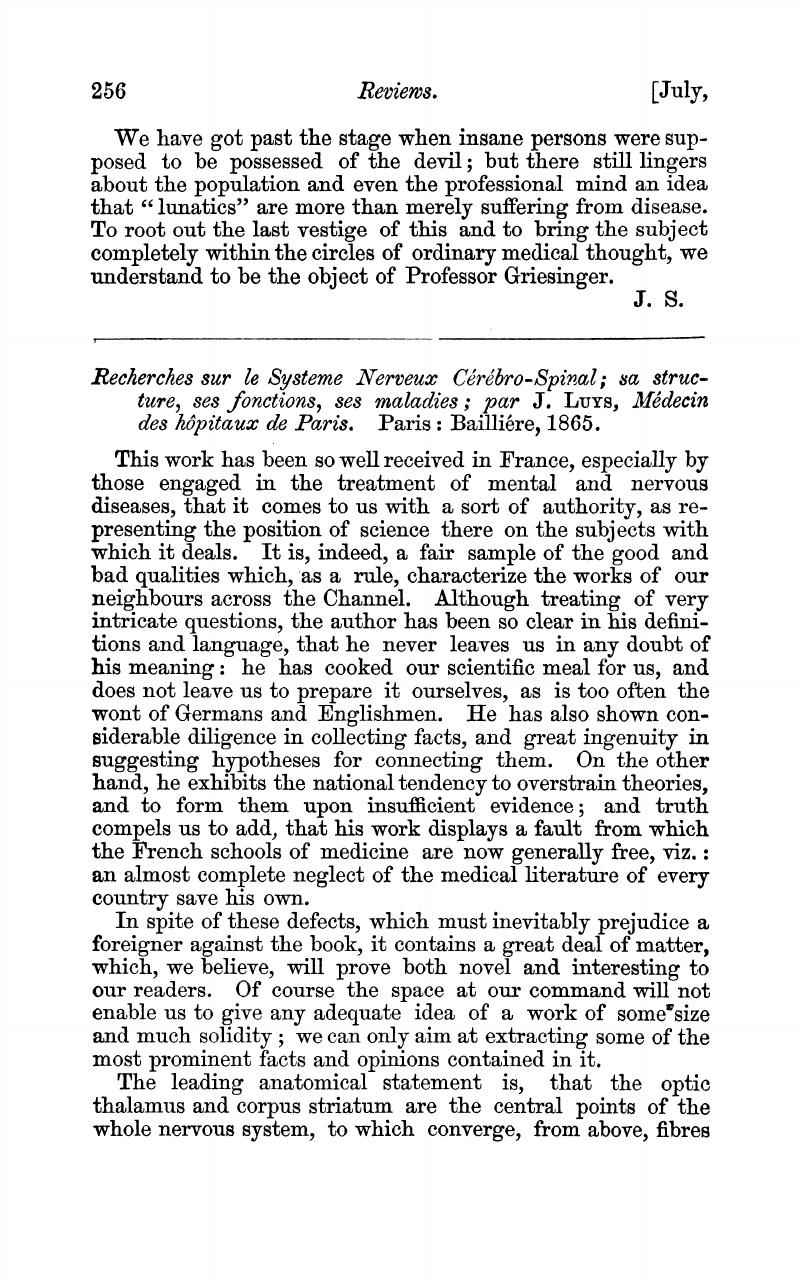No CrossRef data available.
Article contents
Recherches sur le Systeme Nerveux Cérébro-Spinal; sa structure, ses fonctions, ses maladies; par J. LUYS, Médecin des hôpitaux de Paris. Paris: Bailliére, 1865.
Published online by Cambridge University Press: 19 February 2018
Abstract

- Type
- Part II.—Reviews
- Information
- Copyright
- Copyright © Royal College of Psychiatrists, 1868
References
∗ Dr.Jackson's, H. case (Lond. Hosp. Rep., II., 1865), is analogous, in which there was paralysis of the sensory part of the fifth nerve on the left side, and of the motor part on the right.Google Scholar
∗ Especially that of a case, recorded in Vol. XIII. of the Med. Chir. Trans., where the thalami were completely destroyed by carcinoma, which had spared the rest of the brain.Google Scholar
† Case CXLIV. of Dr. Ogle's Collection (Brit. and For. Rev., April, 1865) is also one in point.Google Scholar
∗ Marcé, (Mém. de la Soc. de Biologie, 1856, p. 100) is the principal French writer on the loss of power to write.Google Scholar
† This is, substantially, Dr. Dickinson's view, in his very able article on the cerebellum, in the Brit. and For. Rev. for October, 1865.Google Scholar
∗ In only sixteen cases this asthenia was confined to one side of the body; in eight of these it was direct, and crossed in six. This quasi-hemiplegia has no apparent connection with disease of only one side of the cerebellum; for in twenty-eight of the hundred cases, disease of one side only did not present this symptom during life, and in two cases disease confined to one side exhibited distinctly bilateral asthenia.Google Scholar
† In two cases where epileptic fits had been observed during life, the locus niger was found to contain indurated masses.Google Scholar
∗ Bouisson, M., of Montpellier, has published in the Bull. de l'Acad. de Medicine for Oct. 8, 1860, a most remarkable case of a man who had had double cataract for about three years, and had for some time been in a state of dementia. He was couched, and on the removal of the apparatus, exclaimed, “J'y vois” —the first reasonable sentence he had uttered. His mental state improved so rapidly that in six weeks he was able to return home to gain his livelihood.Google Scholar





eLetters
No eLetters have been published for this article.